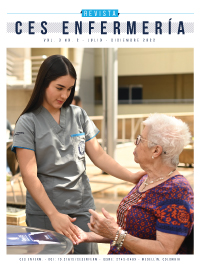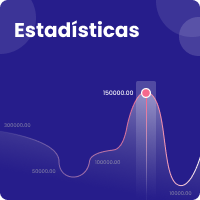Characterization of the scientific publication of professors of a nursing school cited in the gray literature
DOI:
https://doi.org/10.21615/cesenferm.6633Keywords:
publications, publications for science diffusion, gray literature, journal article, nursing researchAbstract
At present, with the great computer and technological development of the 21st century, it has been increasingly possible that the literature considered "grey" is available to the scientific and academic community at a global level, rescuing its importance in the training of future professionals. The foregoing added to the analytical capacity that bibliometrics allows regarding the development of the disciplines, raises a reflection on the scope or diffusion that the scientific production of the universities has had, not only in the media of "formal publication" but also in that literature that also evidences a search for knowledge but that until now is being visualized massively. Objective: to characterize the research of professors of a nursing school of a private university in Medellin, Colombia, cited in the gray literature, to observe the scope and diffusion that their work has had in these media. Methods: descriptive bibliometric study, in which the citations in the gray literature were reviewed, of research, carried out by professors of a nursing faculty of a private university in Colombia within the years 2002-2018. Citations were searched in the Google Scholar database, and the variables were analyzed. Results: 75 citations were found in the gray literature, 76% of the citations are focused on South America, 61% were cited in nursing literature, and the primary type of study where the citations come from is quantitative descriptive, with 56%. Conclusions: the scientific articles produced by the teaching staff continue to be considered for the construction of knowledge of various disciplines, including Nursing.
Downloads
References
Montes J. La literatura gris cambia de color: un enfoque desde los problemas sociales de la ciencia y la tecnología. MediSur. junio de 2018;16(3):424-36. Disponible en: http://www.medisur.sld.cu/index.php/medisur/article/view/3866
Keren D, Ellaway RH, Lockyer J. Social studying and learning among medical students: a scoping review. Perspect Med Educ. 2017; 6:311-8. Disponible en: https://doi.org/10.1007/s40037-017-0358-9
Adams RJ, Smart P, Huff AS. Shades of Grey: Guidelines for Working with the Grey Literature in Systematic Reviews for Management and Organizational Studies. Int J Manag Rev. 2017;19(4):432-54. Disponible en: https://doi.org/10.1111/ijmr.12102
Kokol P, Blažun Vošner H. Historical, descriptive and exploratory analysis of application of bibliometrics in nursing research. Nurs Outlook. 2019;67(6):680-95. Disponible en: https://doi:10.1016/j.outlook.2019.04.009
Garousi V, Felderer M, Mäntylä MV. Guidelines for including grey literature and conducting multivocal literature reviews in software engineering. Inf Softw Technol. 2019; 106:101-21. Disponible en: https://doi.org/10.1016/j.infsof.2018.09.006
Medina R, Franco M, Torres L, Velázquez K, Valencia M, Valencia A. La responsabilidad social universitaria en la actual sociedad del conocimiento. Un acercamiento necesario. MediSur. 2017;15(6):786-91. Disponible en: http://scielo.sld.cu/scielo.php?script=sci_arttext&pid=S1727-897X2017000600006
MamaniO, VenturaJ, Caycho T, Mamani O, Ventura J, Caycho T. Publicación científica de docentes que conforman el jurado dictaminador de tesis en una Facultad de Ciencias de la Salud peruana. Rev Cuba Inf En Cienc Salud 2019;30(3). Disponible en: http://scielo.sld.cu/scielo.php?script=sci_abstract&pid=S2307-21132019000300008&lng=es&nrm=iso&tlng=en
Contreras D. Propuesta de indicadores de producción científica para la evaluación docente de los profesores de la educación superior del sector de la salud. Educación Médica Superior 2008;22(2):1-6. Disponible en: http://scielo.sld.cu/scielo.php?script=sci_arttext&pid=S0864-21412008000200007
Woods S, Phillips K, Dudash A. Grey literature citations in top nursing journals: a bibliometric study. J Med Libr Assoc. 2020;108(2):262-9. Disponible en: https://doi.org/10.5195/jmla.2020.760
Arakaki M. Uso de información en docentes universitarios peruanos: un análisis de citas en trabajos de investigación (2010-2014). An Doc 2018;21(2). Disponible en: https://revistas.um.es/analesdoc/article/view/302651
Farrah K, Mierzwinski-Urban M. Almost half of references in reports on new and emerging nondrug health technologies are grey literature. J Med Libr Assoc. 2019;107(1):43-8. Disponible en: https://doi.org/10.5195/jmla.2019.539
Garrido N, Reyes Hernández F, Fernández C, Navarro M. Caracterización de la literatura gris científica en la Universidad de Moa. 2018;49:41-47; Disponible en: http://ninive.ismm.edu.cu/handle/123456789/3814
Fontoura J, do Prado M, Delacan D, Tuono V. Nursing higher education in MERCOSUR: a bibliometric study. Rev. Bras. Enferm. 2018;71(suppl 4):1732-9. Disponible en: https://doi.org/10.1590/0034-7167-2017-0405
Cintra PR. A produção científica sobre docência no ensino superior: uma análise bibliométrica da SciELO Brasil. Avaliacao 2018;23(2):567-85. Disponible en: https://doi.org/10.1590/S1414-40772018000200016
Shivaram BS, Biradar BS. Assessing grey literature use by researchers of Council for Scientific and Industrial Research (CSIR), India. ALIS 2019. 2019;66(3):94-100 Disponible en: http://nopr.niscair.res.in/handle/123456789/51960
Ferreras T. Visibilidad e impacto de la literatura gris científica en repositorios institucionales de acceso abierto. Estudio de caso bibliométrico del repositorio Gredos de la Universidad de Salamanca. [Tesis]. [Salamanca]: Universidad de Salamanca; 2016. 280 p.
Downloads
Published
How to Cite
Issue
Section
License
Copyright (c) 2022 CES Enfermería

This work is licensed under a Creative Commons Attribution-NonCommercial-ShareAlike 4.0 International License.



